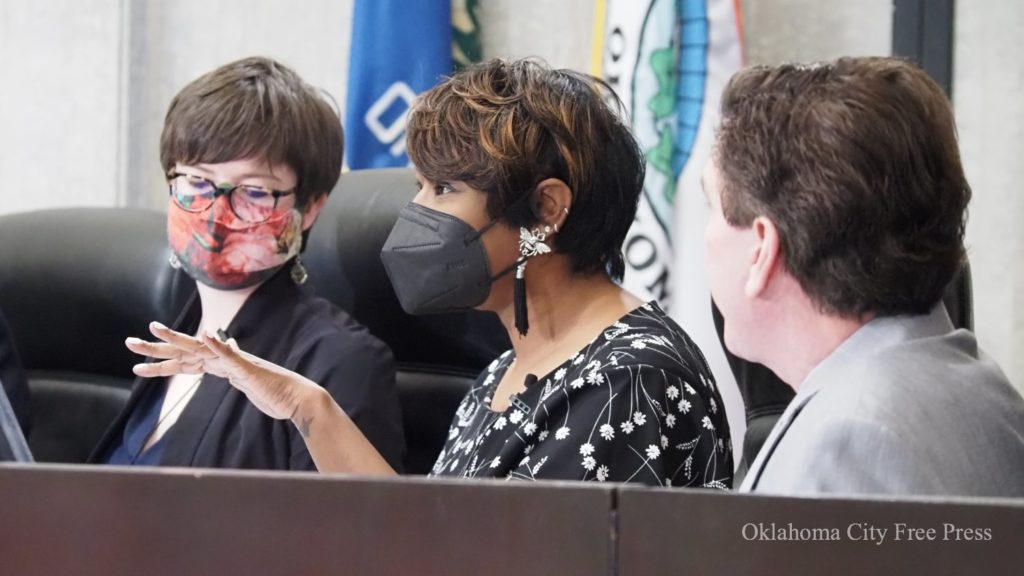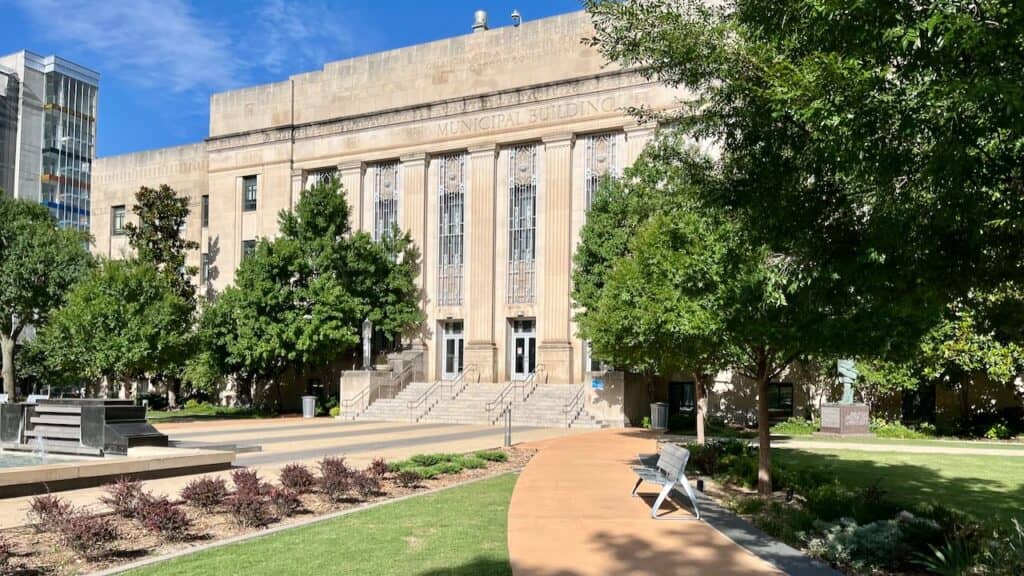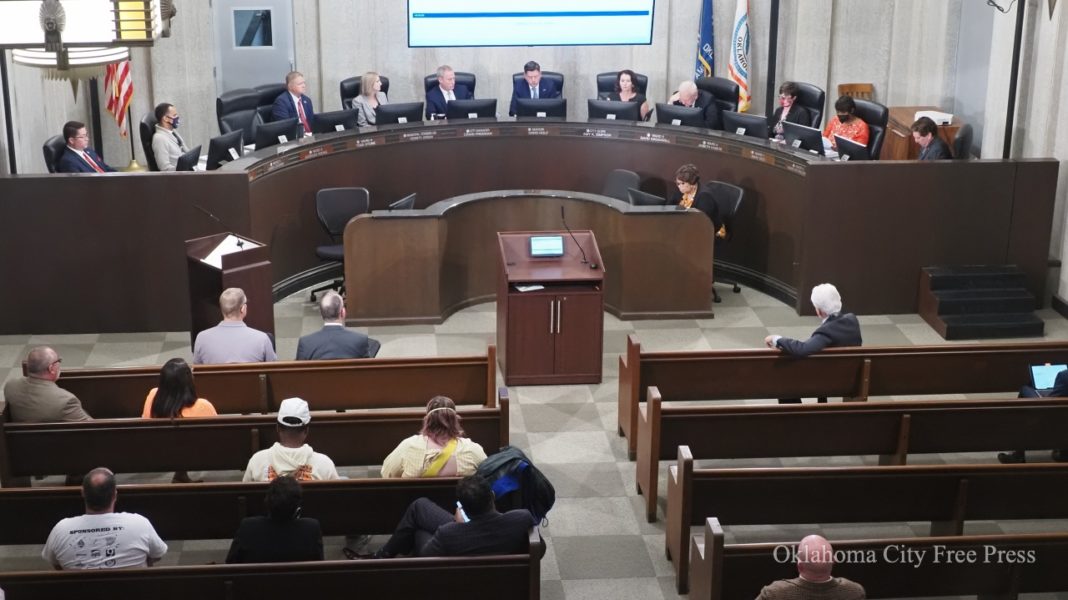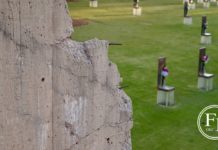Last Updated on August 16, 2022, 7:47 PM | Published: August 16, 2022
OKLAHOMA CITY (Free Press) — The City Council for the City of Oklahoma City approved two management agreements for upcoming MAPS 4 projects, the Henrietta B Foster Center and the Diversion Hub Tuesday.
The Council also approved a funding amendment that added $100 million in unexpected tax collections to the slate of MAPS 4 projects, an increase of 10% of funding for each project.
The Council debated a change to building codes, and voted ultimately to remove a protection for homeowners, but not without an embarrassing violation of Robert’s Rules of Order on the part of Mayor David Holt.

Marty Peercy reports Local government
MAPS Partners
The Council heard from two entities poised to become operating partners for two very different MAPS 4 projects.
First was a consortium led by Metro Technology Centers (MetroTech.) This group will be the operating partner for the Henrietta B. Foster Center for Northeast Small Business and Entrepreneurship that brings together several organizations supporting small businesses. It will work together with MetroTech to bring a robust program of support for minority owned small business innovation.
The diverse group included representatives of organizations across northeast Oklahoma City and beyond.
During the discussion of the credentials and plans for programming, Ward 5 Councilman David Greenwell asked what level of “sophistication” the programming at the center will be, and listed several examples of what he considers “sophisticated” trainings.
The answer was that all tools available will be brought to bear in serving the small businesses and entrepreneurs of Northeast OKC.

Ward 7 Nikki Nice, who represents the relevant area of the project, pushed back. Nice pointed out that “sophistication” is not outside the realm of underserved communities and communities of color, which are often one and the same in Oklahoma City.
The Council approved the binding term sheet for the consortium, led by MetroTech, to be the lessee and operator for the project.
The Council then heard from Megan Taylor, Executive Director of the Diversion Hub. Taylor explained the mission and operation of the organization in support of being the operating partner for the new MAPS 4 Diversion Hub complex slated to be built over the next decade.
Taylor described the physical space wherein the Hub currently operates on NW 10th Street between Robinson and Harvey.
Greenwell asked if the organization could make due with less space, and Taylor gently but capably explained that the work done at the Hub is not easily reduced using newer technology, unlike other business endeavors. Many people served by the organization and its partners don’t have great access to technology, and most needs are acute needs requiring face to face interaction to address.
The Council voted unanimously to approve both agreements.
MAPS Funding
The Council was treated to a presentation on better-than-projected sales tax collections, and what that can mean for MAPS 4 projects. The overage, which was described as overage in the sense that the City maintained a very conservative expectation of growth in collections, amounted to $100 million.
These “overages” will be applied across the 16 MAPS 4 projects as 10% increases in the planned allocation of funds over the course of the ten-year tax.
This is the chart from the agenda showing the computations and specific amounts are in the embedded document at the bottom.
In spite of trepidation expressed by Greenwell, the Council approved the allotment of the extra collections.
Building Code
The Council entertained more public comment and discussion on the topic of eliminating a code requirement to include an ice barrier on new construction home roofs.
The issue at hand was the requirement to include an ice barrier on roofs to prevent “ice damming,” a phenomenon wherein snow melt freezes at the eaves of a roof and pushes ice back up the roof under the shingles, creating leaks and home damage when the thaw returns.
The debate largely took place between two business professionals: Home Builders and Roofers.
Home builders routinely made the case that an ice barrier is not relevant for our regional climate, as this area does not receive an annual snowfall exceeding ten inches for days at a time. Homebuilders and property managers, and insurance agents all claimed that ice damming does not occur in this region.
Roofers, on the other hand, claim that ice damming causes tens of thousands of dollars worth of damage regularly in central Oklahoma.

One roofer in particular claimed that ice damming caused damage to his own recently renovated home after the major ice storm that occurred a couple of years ago in central Oklahoma.
The argument largely centered on costs for home building. Builders said it was a prohibitive cost. Roofers claim the cost was minimal compared to the price of repairing damage done later by ice and snow.
Council was divided on the issue. The suburban and conservative contingent of the Council supported deregulating, while the progressive members were reluctant.
Ward 7 Councilwoman Nikki Nice expressed specific concern over the fact that this issue was rushed into the City Council’s purview a month ago, instead of going through the empaneled group of experts on the commission overseeing Building Codes.
Nice offered a motion during her comments to send the item to the relevant commission.
At that point, Mayor Holt said that Ward 8 Councilor Mark Stonecipher had already moved the initial item for a vote.
Holt then called the vote, which passed by a margin of 6-3.
This was in violation of Robert’s Rules of Order, as would come to light later.
The regulation was repealed.
Robert’s Rules of Order
During comments from Council, Nice pointed out that Robert’s Rules of Order had been violated.
Robert’s Rules is a longstanding standard for the presiding of meetings that the Council has voted to adopt repeatedly as the Rules are updated and the Council also updates.
Nice’s contention was that her motion to defer and send the above item to the Code Commission should have taken precedence before Ward 8 Councilman Stonecipher’s earlier motion for a vote on the item.
Nice was proven later to be right in her concern. However, City Attorney Kenneth Jordan determined that the vote stands, since Nice failed to object on point of order at the time that Mayor David Holt declared that Stonecipher’s motion took precedence.
Holt was, in fact, incorrect in his handling of Nice’s motion. However, according to Robert’s Rules, Nice could only interrupt the voting process by calling a point of order before the vote.
Jordan explained further that any member of the Council who had voted in the majority could make a motion to revisit the vote.
None of the six members of Council – Carter, Young, Stone, Greenwell, Stonecipher, and Mayor David Holt – made such a motion, however.
The vote stood in spite of its impropriety. Holt was no longer present for the conversation, having left the meeting earlier.
MAPS 4 funding overages applied
MAPS4-Amended-Revenue-Schedule-AColumnist covering local government in Oklahoma City and Oklahoma County from May 2019 through June 2023.










